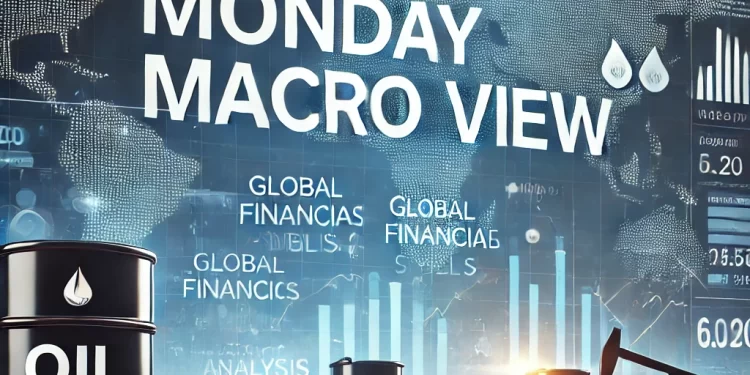The global economic landscape continues to be shaped by a myriad of factors, from fluctuating commodity prices to geopolitical tensions and varied regional economic performances. Recent data and market movements paint a complex picture, pockets of hope but still optimistic caution needs to be practiced.
UK Economic Indicators
The UK economy showed resilience with retail sales surging by 2.9% month-on-month in May, significantly surpassing the expected 1.6%. Year-on-year, retail sales also rose by 1.3%, defying predictions of a 0.5% decline. When excluding auto fuel, the figures remained robust with a 2.9% increase month-on-month and a 1.2% rise year-on-year. Consumer confidence, as measured by the GfK index, improved to -14 in June from -17 in May, reaching the highest level since November 2021. Despite these positive indicators, the UK’s public debt has soared to its highest since 1961, adding pressure as the general election approaches.
Eurozone and German Data
In the Eurozone, business activity slowed sharply in June, with the manufacturing PMI dropping to 45.6 from an expected 47.9, and the services PMI falling to 52.6 from 53.5. Germany mirrored this trend, with its manufacturing PMI sliding to 43.4 from 46.3 and the services PMI falling to 53.5 from 54.4. These figures suggest a cooling of economic activity in the region’s largest economy, raising concerns about future growth prospects.
French and Japanese Developments
France also experienced a contraction in its services sector, with the services PMI dropping to 48.8 from an expected 50.0, and the manufacturing PMI falling to 45.3 from 46.8. Business confidence remained stable, though the services confidence dipped slightly.
Japan’s inflation figures showed a slight slowdown, with the national CPI rising by 2.8% year-on-year in May, just below the expected 2.9%. The core CPI, excluding fresh food and energy, rose by 2.1%, below the expected 2.2%. Manufacturing activity showed modest growth, with the PMI at 50.1, while the services PMI slipped to 49.8, indicating a contraction.
India’s Strong Performance
India’s economy showed robust performance with business activity growing faster in June. The manufacturing PMI rose to 58.5 from 57.5, and the services PMI edged up to 60.4 from 60.2, marking significant expansion. However, Prime Minister Modi’s government faces challenges in balancing food policy amidst electoral setbacks, with potential adjustments to export curbs on rice and onions being considered to manage food inflation.
China’s Economic Measures
China is preparing for a key plenum in July to address tax revenue imbalances, aiming to make more tax revenues available to local governments and reduce reliance on land sales. Despite these efforts, the yuan slipped to a fresh seven-month low due to mounting outflows.
South Korea and Australia
South Korea saw a strong export performance in June, with exports rising by 8.5% year-on-year. However, imports fell by 0.6%, reflecting underlying economic challenges. In Australia, both manufacturing and services PMIs fell, indicating a slowing economic momentum.
US Market Dynamics
In the US, big banks are facing growing risks from non-bank financial entities, while the S&P 500’s performance remains a point of concern, drawing historical parallels to large-cap stock booms that preceded significant market corrections.
Oil Market Sentiments
The oil markets have experienced volatility, with hedge funds and money managers repurchasing 80 million barrels of petroleum after a previous sell-off. This buying activity was led by crude and reversed some of the heavy sales triggered by OPEC+’s announcement of potential production increases. Despite this, fund positions remain broadly bearish, indicating continued caution among investors.
Overall, the global economic outlook remains mixed. While there are pockets of strong performance, such as in the UK retail sector and Indian business activity, other regions like the Eurozone and Japan are showing signs of slowing growth. The oil market remains volatile, influenced by geopolitical developments and investor sentiment. As we move forward, the interplay of these factors will be crucial in shaping the economic landscape.













